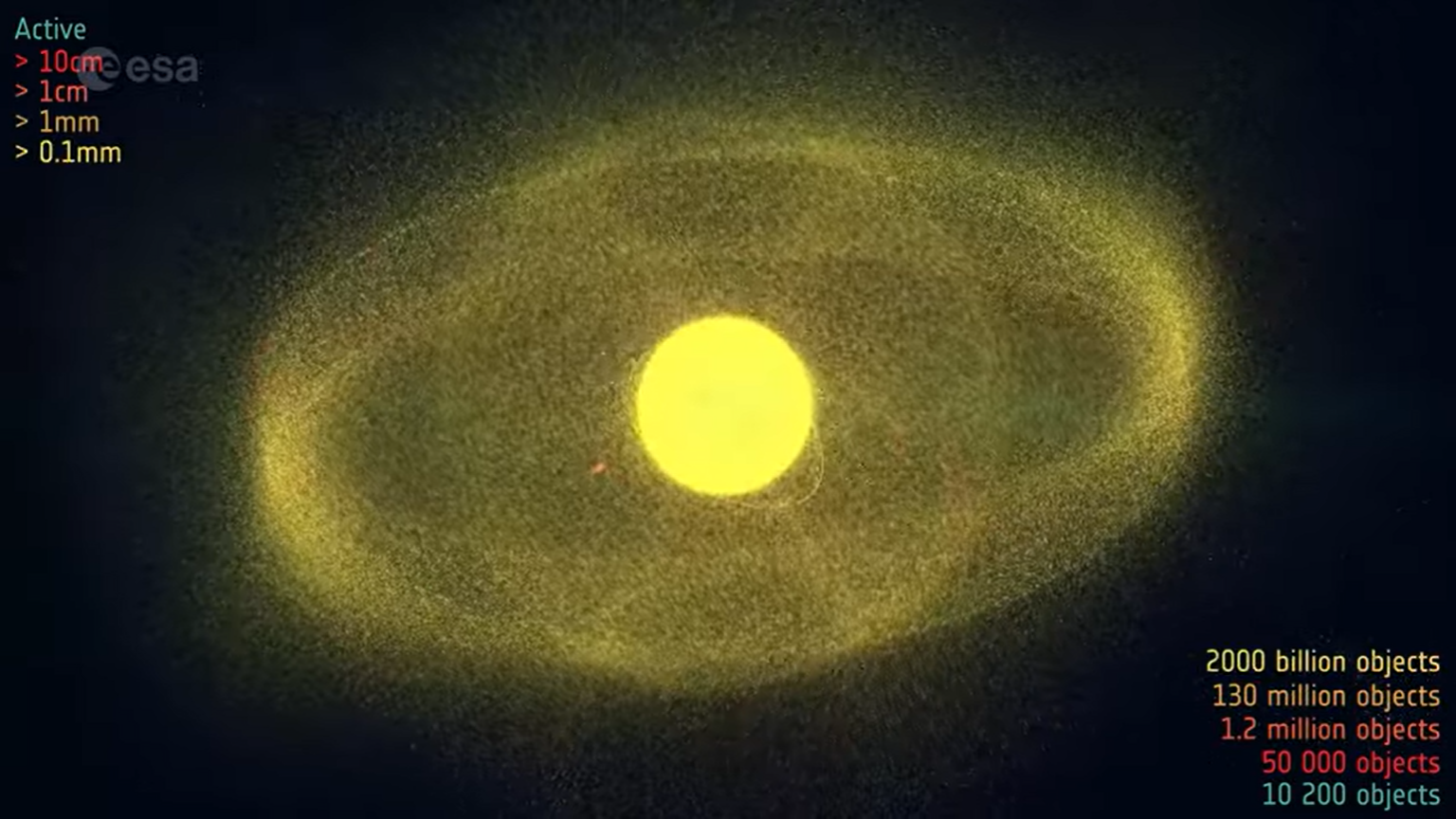DARPA is exploring ways to build big things in space
A new DARPA program seeks to test ideas that could kick-start off-Earth manufacturing.

The U.S. military has awarded contracts under a new program to address in-space manufacturing needs, as part of a larger effort to reduce the costs of spaceflight.
Space manufacturing could allow humanity to build large structures efficiently, using materials launched from Earth or harvested on another world such as the moon or Mars. Such work could conceivably begin on the moon in the not-too-distant future, especially with the arrival of private landing missions as part of NASA's Commercial Lunar Payload Services program.
In-space manufacturing is still in its infancy, and the U.S. military wants to help it along. The Defense Advanced Research Projects Agency (DARPA) recently kicked off work with eight teams to show proofs of concept "to enable production of future space structures on orbit without the volume constraints imposed by launch," DARPA officials stated a few weeks ago.
Making stuff in space: off-Earth manufacturing is just getting started
The NOM4D program — short for "Novel Orbital Moon Manufacturing, Materials, and Mass Efficient Design" — will test materials science, manufacturing and design technologies that could be used off Earth someday, DARPA officials said. (The initial phases funded now will not be in space, however.)
While NOM4D does not immediately consider tech for use on or around the moon, DARPA officials said, the Earth-orbiting structures the program seeks to enable and evaluate could eventually allow the U.S. military to monitor cislunar (Earth-moon) space. Cislunar space is deemed a priority area for the U.S. military, given growing commercial and government activities in this zone.

The trouble with launching things into space, as DARPA indicated, is that such objects are constrained by the dimensions and lift capability of the rocket, not to mention the vibrations. This is why antennas, for example, often are unfurled in space; they are unwieldly objects to otherwise launch.
Breaking space news, the latest updates on rocket launches, skywatching events and more!
"Current space systems are all designed, built and tested on Earth before being launched into a stable orbit and deployed to their final operational configuration," Bill Carter, NOM4D program manager in DARPA's defense sciences office, said in the same statement. "These constraints are particularly acute for large structures such as solar arrays, antennas and optical systems, where size is critical to performance."
Creating more complex structures in space will likely require building them in place, much like how the International Space Station was put together piece by piece. But to a greater degree than ISS construction, which involved astronauts performing dozens of spacewalks with assistance from the Canadarm2 robotic arm, future in-space manufacturing facilities will likely use robotic technologies almost exclusively. Also, future facilities will be tasked with using raw materials, rather than preassembled components like those that comprise the ISS.

DARPA emphasized that the NOM4D program does not intend to launch raw materials to space, to collect lunar samples or to build any structures just yet. The program will allow for potential "orbital experimentation" in "potential follow-on efforts" in the next 10 to 20 years, the agency stated. For now, however, there are three initial phases planned.
"During Phase 1, program performers are tasked to meet stringent structural efficiency targets supporting a megawatt-class solar array," DARPA stated. "In Phase 2, teams are tasked to increase mass efficiency and demonstrate precision manufacturing for radio frequency reflectors. In the final phase, performers are tasked to demonstrate precision for infrared reflectors."
The full list of in-space materials and manufacturing recipients and their tasks, in DARPA's words, include:
- HRL Laboratories, LLC, Malibu, California, developing new die-less fabrication processes to make orbital mechanical elements and bonded structures on-orbit.
- University of Florida, Gainesville, Florida, developing predictive material and correlative process models to enable on-orbit use of laser forming.
- University of Illinois Urbana-Champaign, Champaign, Illinois, developing a high precision in-space composite forming process utilizing self-energized frontal polymerization.
- Physical Sciences, Inc., Andover, Massachusetts, developing continuous fabrication of regolith-derived, glass-ceramic mechanical structures for use in large-scale orbital applications.
- Teledyne Scientific Company, LLC, Thousand Oaks, California, building a comprehensive materials properties database of additive-modified regolith for use in controlled thermal expansion precision orbital structures.
The list of mass-efficient designs for in-space manufacturing recipients and their tasks, in DARPA's words, is:
- University of Michigan, Ann Arbor, Michigan, exploring new design approaches to mass-efficient, high- precision, stable and resilient space structures based on metamaterial and metadamping concepts.
- Opterus Research and Development, Inc., Loveland, Colorado, developing designs for extreme mass efficient large-scale structures optimized for resiliency and mobility.
- California Institute of Technology, Pasadena, California, designing novel tension and bending hybrid architectures and structural components with highly anisotropic mechanical response.
Follow Elizabeth Howell on Twitter @howellspace. Follow us on Twitter @Spacedotcom and on Facebook.

Elizabeth Howell (she/her), Ph.D., was a staff writer in the spaceflight channel between 2022 and 2024 specializing in Canadian space news. She was contributing writer for Space.com for 10 years from 2012 to 2024. Elizabeth's reporting includes multiple exclusives with the White House, leading world coverage about a lost-and-found space tomato on the International Space Station, witnessing five human spaceflight launches on two continents, flying parabolic, working inside a spacesuit, and participating in a simulated Mars mission. Her latest book, "Why Am I Taller?" (ECW Press, 2022) is co-written with astronaut Dave Williams.
